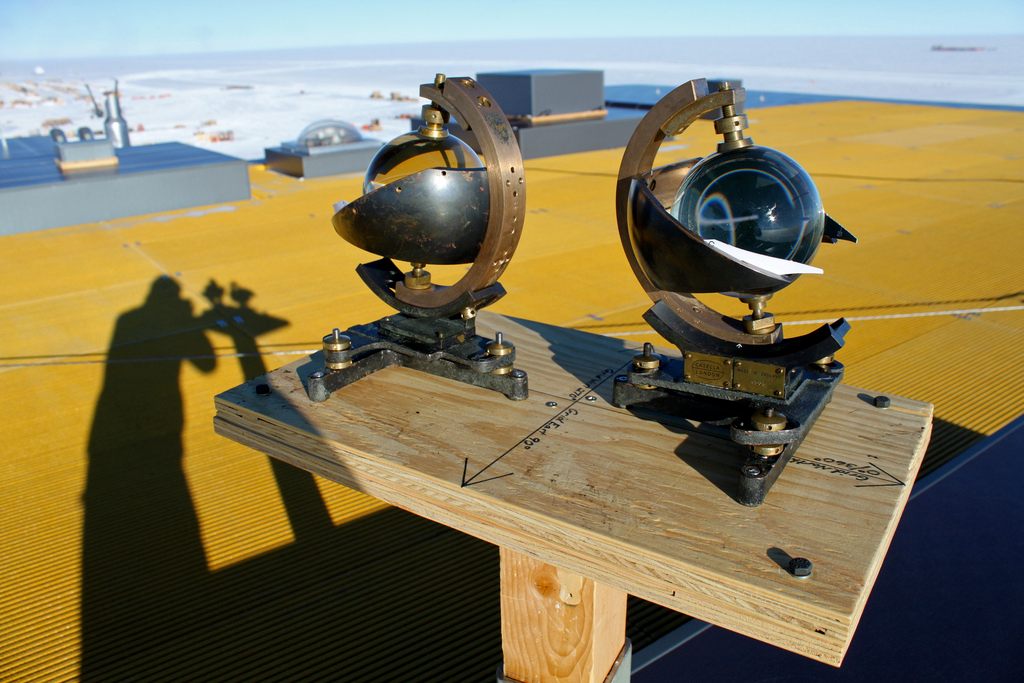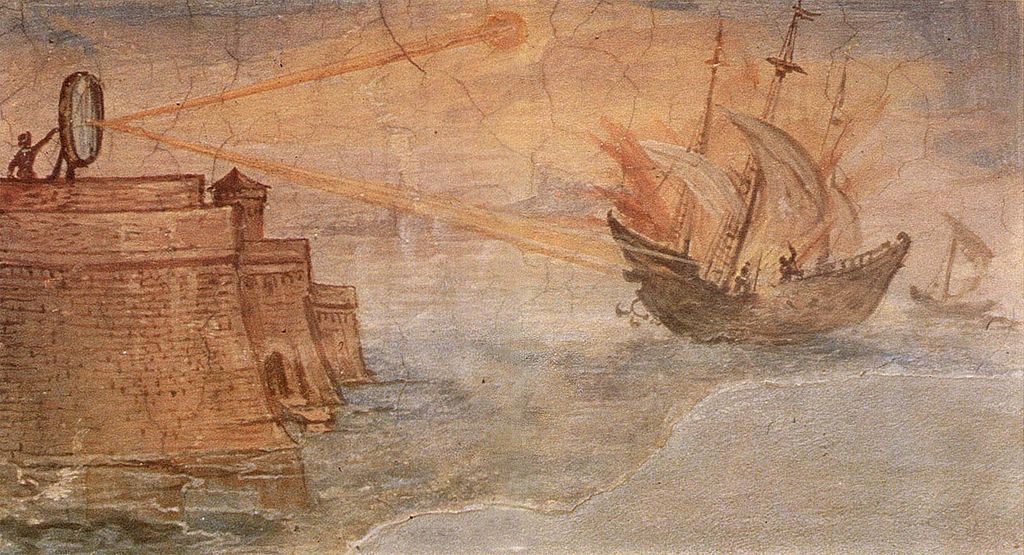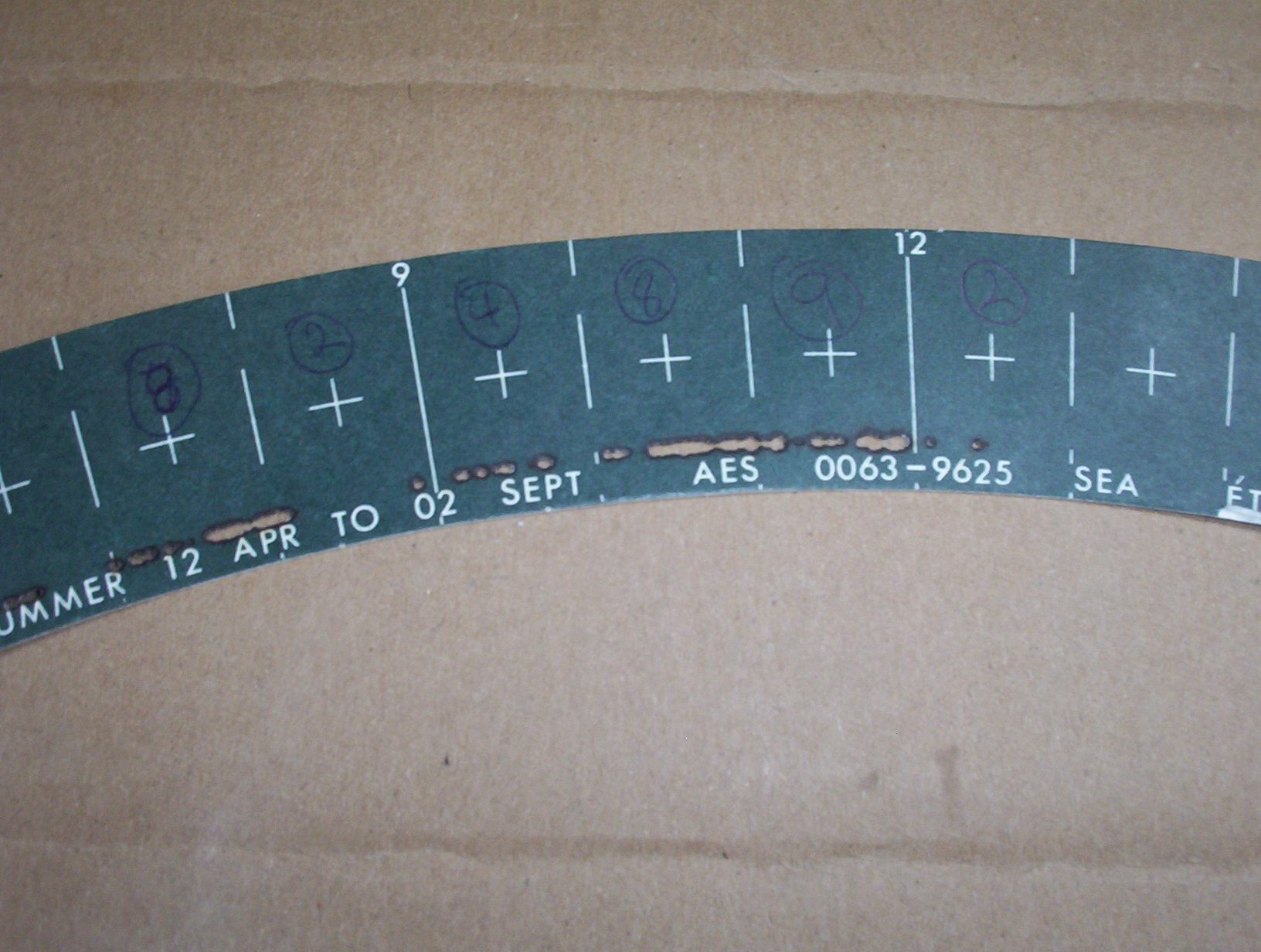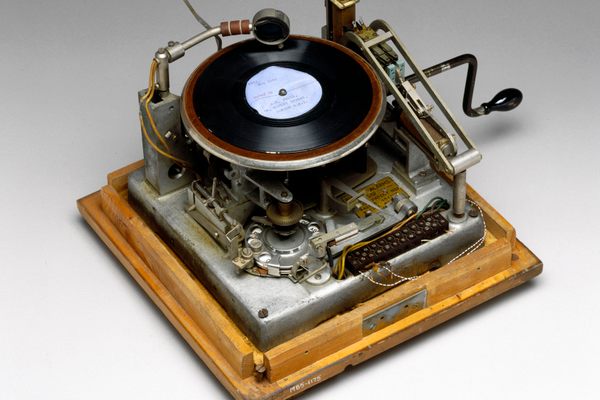Why Modern Meteorologists Use a 19th-Century Crystal Ball
The answer is as simple as sunshine.

Crystal balls at the South Pole. (Photo: Eli Duke/CC BY-SA 2.0)
It sounds like the premise for a riddle: At the South Pole are two crystal balls that provides unfailingly accurate information—not about the future, but about the past.
This is no trick. It’s just meteorology. The dual glass spheres at the South Pole are Campbell-Stokes sunshine recorders, orbs that capture the number of hours of direct sunlight each day, as well as its intensity.
Sunshine recorders first came about in the 1850s, thanks to John Francis Campbell—the Campbell in Campbell-Stokes. Around 1853, Campbell, a Scottish author who focused on Celtic folklore, developed a desire to quantify sunlight. As he recalled some 25 years later, he had “some notion of the nature and power of sunshine,” and “wanted something to record and measure the work of it as a barometer weighs air, and a thermometer measures heat.”

A Campbell-Stokes sunshine recorder in Antarctica. (Photo: Akulovz/CC BY-SA 4.0)
At the time, Campbell was acquainted with the burning-glass, a convex lens that focused the sun’s rays to create an intense beam of heat and light. The use of mirrors and lenses to concentrate sunshine has been around since the days of the Ancient Greeks, when, according to the relevant mythology, Archimedes laid waste to a fleet of Roman enemies by bouncing the sun’s rays off a parabolic mirror and scorching the unsuspecting sailors.

This painting, by Giulio Parigi circa 1600, shows Archimedes burning Romans to a crisp with his giant sun mirror. (Image: Public domain)
Armed with knowledge of the burning-glass’ workings, Campbell sought a way to not only trace the sun’s path, but record the intensity of the light over the course of a day. He came up with a glass sphere. The technology behind it, Campbell wrote rather poetically, was thus: “When a transparent sphere is set out of doors all the shining bodies that stud the visible sky shine through it to opposite foci.”
Campbell didn’t have any transparent spheres lying around, but he did notice the abundance of hollow glass globes, which were being made for lampshades. He tracked down a maker of such lampshades and, in Campbell’s words, “fraternized with him in his workshop, where he lived with a wife, and a tame squirrel, and a canary, and some flowers, at the top of a high house where the sun shone cheerily.”
Amid all this whimsy, Campbell found time to develop his sunshine recorder, which combined a hollow, six-inch-wide glass sphere with a hard wooden bowl. He placed the sphere on top of a three-inch tumbler, then put both in a 12-inch-wide wooden bowl on the ledge of a south-facing window. As the sun blazed across the sky each day, it traced a path in the wood. The more intense the sunlight, the deeper the engraving.

A sunshine recorder at Chatsworth House in England. (Photo: Iain Farrell/CC BY-ND 2.0)
This design suited meteorologists just fine until 1879, when physicist/mathematician Sir George Gabriel Stokes came up with an ingenious modification.
Instead of letting the sun scorch a path into the wooden bowl, Stokes introduced removable cards made of thick paper, which were placed in the bowl and swapped out each day. He also switched the material of the bowl, from wood to metal.

A removable card showing a day’s worth of sunshine in Nunavut, Canada. (Photo: Alan Sim/CC-BY-SA 2.0)
Such Campbell-Stokes sunshine recorders are still used today. Blue Hill Observatory in Massachusetts has one, as does Hong Kong Observatory. But among the most impressive sites is the South Pole, where two recorders sit back-to-back on the roof of the Amundsen-Scott Research Station. In winter, when every day and night is dark, they record nothing. But in summer, when the sun doesn’t set for six months, the light eventually burns a path through both.


















Follow us on Twitter to get the latest on the world's hidden wonders.
Like us on Facebook to get the latest on the world's hidden wonders.
Follow us on Twitter Like us on Facebook